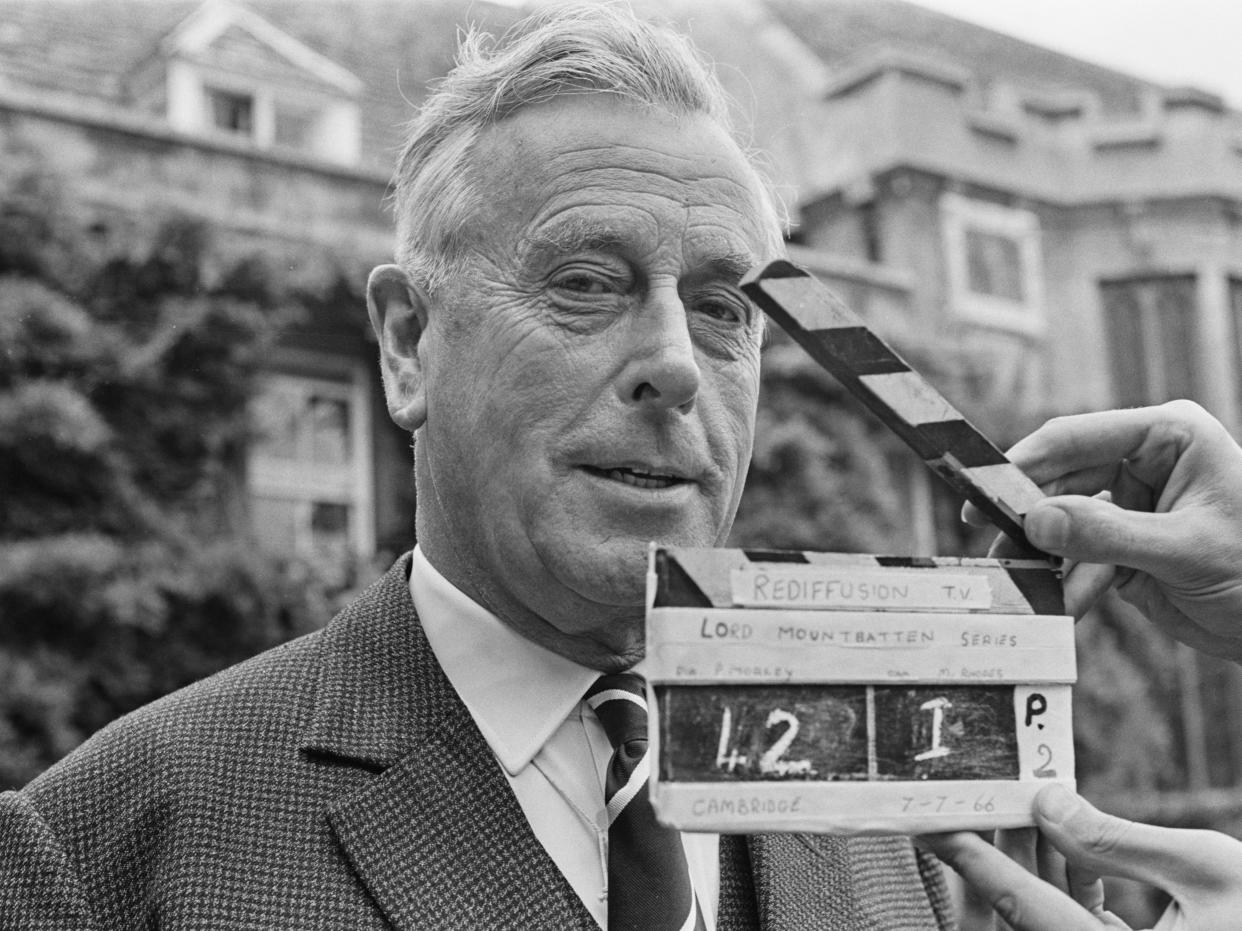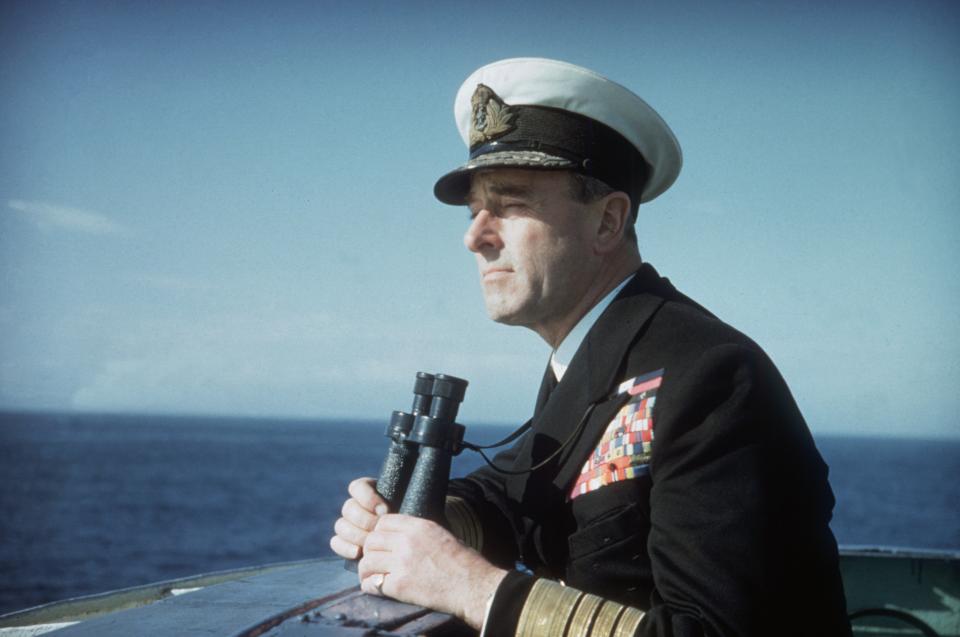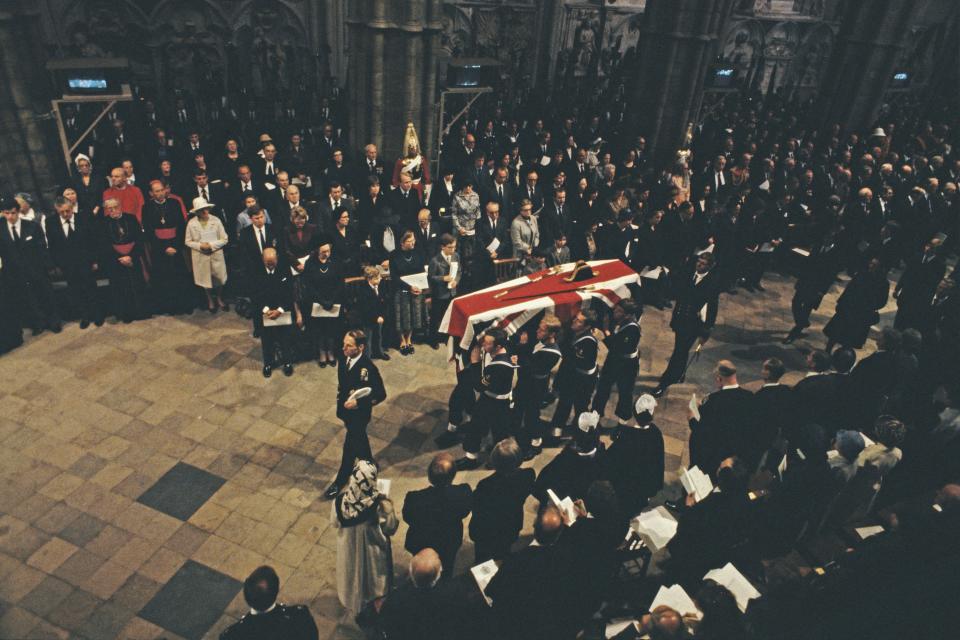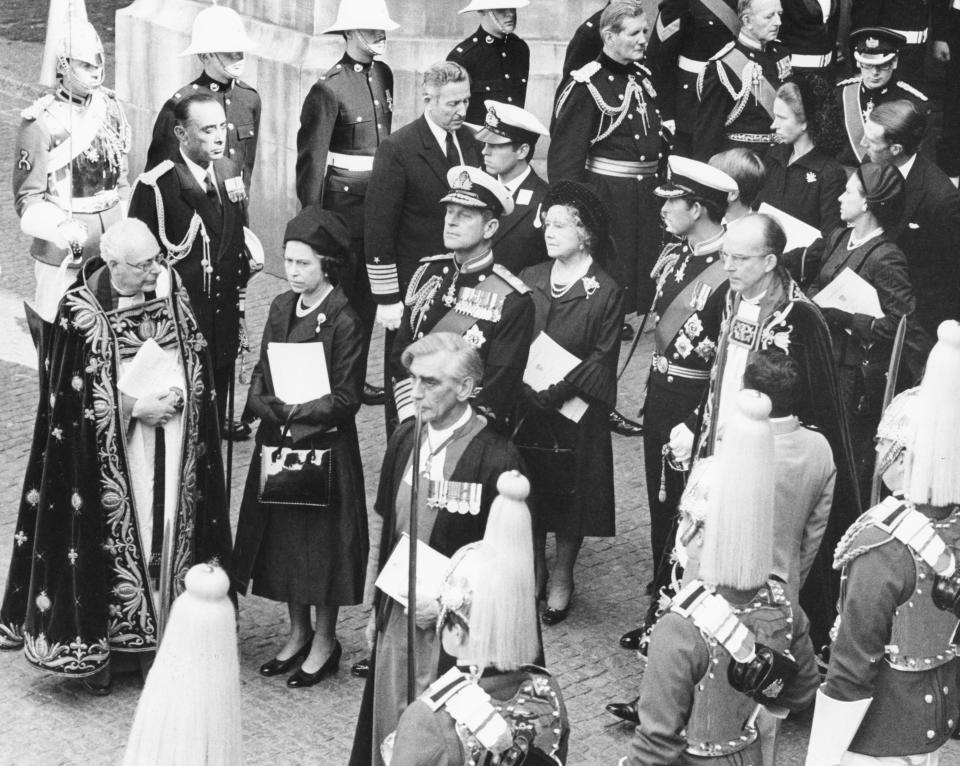Lord Mountbatten death: Who was he and why was he assassinated?

- Oops!Something went wrong.Please try again later.
The fourth season of The Crown explores the familial politics and often complex inner workings of the royal family between 1977 and 1990 following on from the last series, which ended in 1977.
Much of the cast from the previous series have resumed their roles – including Olivia Colman as Elizabeth II and Tobias Menzies as the Duke of Edinburgh – but this season also sees newcomers, including Emma Corrin as Lady Diana Spencer.
Several historical events are covered in the series, including Margaret Thatcher’s appointment as prime minister, the Falklands War and the intrusion of Michael Fagan into Buckingham Palace in the early 1980s.
It also features the funeral of Lord Mountbatten, who was assassinated by the IRA in August 1979, and is played by Game of Thrones star Charles Dance, who succeeded actor Greg Wise after the first two seasons.
Read more: How the cast of The Crown compares to their real-life royal counterparts
Here is everything you need to know about Lord Mountbatten, his close friendship with Prince Charles, and his assassination.
Marriage and family
Louis Mountbatten, 1st Earl Mountbatten of Burma, was born Prince Louis of Battenberg on 25 June 1900 in Windsor.
As the son of Prince Louis of Battenberg and Princess Victoria of Hesse and by Rhine, and as the great-grandson of Queen Victoria, Lord Mountbatten was uncle to Prince Philip and a distant cousin of Queen Elizabeth II.
He was an officer in the British Royal Navy and in 1947 was appointed the last Viceroy of India, during the partition of British India into India and Pakistan.
Lord Mountbatten was known to have a particularly close relationship with the Prince of Wales, becoming a mentor to the young royal and offering him guidance throughout his life.
While advising Prince Charles on his love life, Lord Mountbatten reportedly told him that it would be a good idea to “sow some wild oats” before settling down.

Lord Mountbatten also reportedly deterred Prince Charles from embarking on a relationship with Camilla Shand, who went on to marry Andrew Parker Bowles in 1973.
He was known to the royal family as “Dickie”. The Duke of Cambridge named his son, Louis, after Lord Mountbatten.
When he was 22, Mountbatten married Edwina Cynthia Annette Ashley, an heiress and socialite with whom he had two daughters, Patricia and Pamela.
However, the marriage was said to be complicated. In the first episode of season two of The Crown, Elizabeth II speaks candidly with “Uncle Dickie” about her own marital issues.
“You married a wild spirit—we both did," he says, referring to his wife. "Trying to tame them is no use.
"Of course I considered ending it," he continues. "Then I imagined how thin, how poor life would be. I realised, when you really adore someone, as fully and as hopelessly as I think you and I do, you put up with anything."
Lord Mountbatten is thought to have had numerous affairs and once reportedly said of his wife, "Edwina and I spent all our married lives getting into other people's beds."
An alleged coup against Harold Wilson’s government
In the third season of The Crown, Lord Mountbatten is approached to lead a coup against Labour's then-prime minister Harold Wilson.
No such coup has ever been confirmed, though theories abound and it has been written about extensively with differing claims.
Author Andrew Lownie explored the alleged coup attempt in his 2019 book, The Mountbattens: Their Lives & Loves, suggesting that it required the Queen’s intervention in order to dissuade Lord Mountbatten from proceeding.
In the 1987 book, Spycatcher, author Peter Wright claimed that “up to 30” MI5 officers joined a secret campaign to undermine Wilson in the hope that Lord Mountbatten would replace him. However, in Wright’s book, it is claimed that Mountbatten refused as he saw this as treason.
In the 2006 BBC documentary The Plot Against Harold Wilson it is claimed that there had been a second plot involving Mountbatten to undermine Wilson during his second term in office between 1974 and 1976. Though this claim has never been confirmed.
The partition of India
Lord Mountbatten was the last Viceroy of India, during the partition of British India into India and Pakistan. In this role, he was the chosen representative of King George VI, empowered to govern on his behalf in the then British colony.
Mountbatten is said to have been reluctant to take on the role. As the last Viceroy, he was assigned the task of overseeing the transition of India’s independence after 200 years of colonial rule. India wanted independence from Britain, and it is believed that, following the Second World War, Britain would struggle financially with the upkeep of running an empire.
Tensions had been rising between India's Muslim and Hindu communities so it was decided that the new independent nation would be split into two states that would rule themselves: the Hindu-majority India and Muslim-majority Pakistan, which was split into Pakistan and East Pakistan (now Bangladesh) - some 1,200 miles apart.
Mountbatten brought forward the date of the partition from 1948 to 1947, hoping this would reduce the tensions. But the Indian Independence Act, which came into force at midnight on 15 August 1947, had the opposite effect. Partition was rushed through and millions of people were forced to flee their homes when they found themselves in the wrong state, with millions of Hindus moving to India and millions of Muslims moving to the newly-created Pakistan.
It was the largest human mass migration in history and led to clashes between the communities. A million people died in the conflict and it created an unprecedented refugee crisis as an estimated 10-12 million people were displaced, families split up and communities fractured.
In 1971, East Pakistan split away from the other two nations to become Bangladesh.
Lord Mountbatten’s death
On 27 August 1979, Lord Mountbatten went lobster fishing on his wooden boat, Shadow V, in the village of Mullaghmore, County Sligo, in the west of Ireland, where he had a holiday home.
The 79-year-old was joined by several companions, including his elder daughter Patricia and her husband; his twin 14-year-old grandsons Nicholas and Timothy; his son-in-law’s mother Doreen, Dowager Lady Brabourne; and a 15-year-old boat boy, called Paul Maxwell.
While the party was on the boat, a bomb that had been secretly placed on board exploded.
According to a BBC report, there had been no security around the moored boat prior to the attack.

Lord Mountbatten was pulled alive from the water, his legs reportedly almost severed from the blast. He died shortly afterwards.
His grandson Nicholas and Paul Maxwell also died as a result of the explosion, as did Dowager Lady Brabourne the following day.
The aftermath
The attack took place during the Troubles in Northern Ireland, which saw Unionists clash with Republicans over whether Northern Ireland should be part of the United Kingdom or the Republic of Ireland.
Clashes broke out between British troops and the biggest of the pro-republican groups, the Irish Republican Army (IRA), which carried out bombings across Britain and Northern Ireland as part of its tactics. The conflict lasted for over 30 years, before eventually ending with the Good Friday Agreement of 1998.
The IRA claimed responsibility for Mountbatten's assassination, stating at the time that the “bombing was a discriminate act to bring to the attention of the English people the continuing occupation of our country”.
“The death of Lord Mountbatten and tributes paid to him will be seen in contrast to the apathy of the British Government and English people to the deaths of over 300 British soldiers and the deaths of Irish men, women and children at the hands of their forces,” the IRA said.
On the same day as Lord Mountbatten’s assassination, 18 British soldiers were also killed by members of the IRA near Warrenpoint in Northern Ireland.

Then-prime minister Margaret Thatcher – who is portrayed by Gillian Anderson in The Crown – released a statement following Lord Mountbatten’s death, which read: “His death leaves a gap that can never be filled. The British people give thanks for his life and grieve at his passing.”
Lord Mountbatten’s funeral was held at Westminster Abbey on 5 September, an event that is depicted in the new season of the Netflix drama.
Prince Charles, then 30 years old, delivered a reading at the ceremony, reading the lesson from Psalm 107.
Former IRA member Tommy McMahon was imprisoned for life for the murder of Lord Mountbatten. However, in August 1998, Mr McMahon was released under the Good Friday Agreement.
The Mountbatten family today
Mountbatten had two children: Patricia Knatchbull, who died in 2017, and Lady Pamela Hicks, who is 91 years old. Last year, she joined her daughter, India Hicks, on a podcast to discuss her high society life.
India Hicks, 53, is a writer and interior designer and was a bridesmaid at the wedding of Prince Charles, her godfather, and Diana. She has just released a book on the art of entertaining.
This story was amended on December 10, 2020. An earlier version suggested that Queen Elizabeth II was the British monarch at the time of Partition, when it was King George VI.
Read More
A timeline of Charles and Diana’s relationship from dating to divorce
The women Prince Charles dated before marrying Diana
Who were the Queen’s hidden cousins, Nerissa and Katherine Bowes-Lyon?
Imelda Staunton reveals pressure to play the Queen on The Crown

